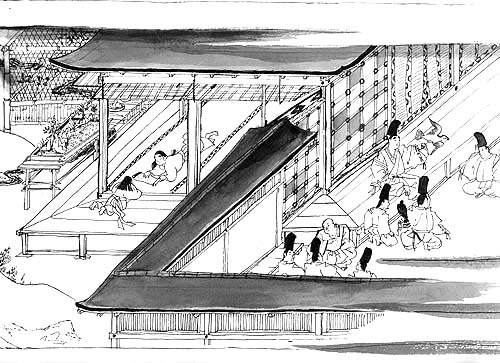|
||
 |
||

(C)2001 Japanese Architecture and Art Net Users System. No reproduction or republication without written permission.
掲載のテキスト・写真・イラストなど、全てのコンテンツの無断複製・転載を禁じます。
|
||||||
| gyaku enkinhou 逆遠近法 | ||||||
| KEY WORD : art history / paintings | ||||||
| Lit.
inverted perspective. A visual technique sometimes employed in Chinese and
Japanese painting. While the Western perspective system uses parallel lines
that are drawn on a picture plane convergent at a vanishing point, in gyaku
enkinhou they are drawn to spread apart as they go further into the
distance. In the case of Japanese painting, gyaku enkinhou was often
used in 12-13c *yamato-e
やまと絵 for residences, so as to allow greater space to depict the people
inside. It was later employed by Suzuki Harunobu 鈴木春信 (1725-70) in the Edo
period for his *ukiyo-e
浮世絵 and by the *Rinpa
琳派 (17-18c) for their decorative screen painting. |
||||||
 |
||||||
| REFERENCES: | ||||||
| EXTERNAL LINKS: | ||||||
| NOTES: | ||||||
(C)2001 Japanese Architecture and Art Net Users System. No reproduction or republication without written permission. 掲載のテキスト・写真・イラストなど、全てのコンテンツの無断複製・転載を禁じます。 |
||||||